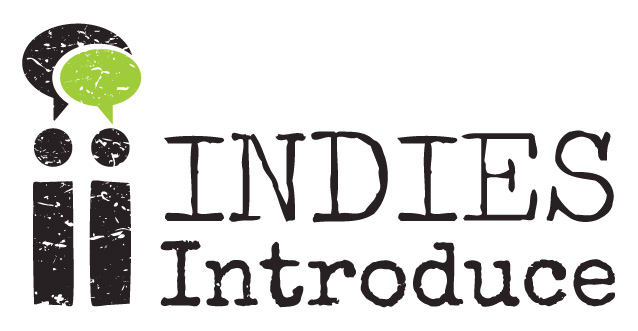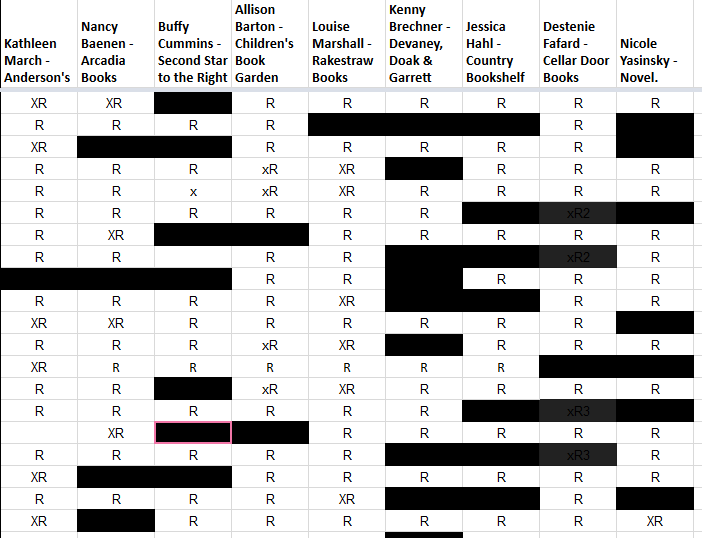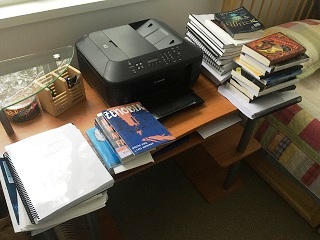If there is anything positive to be found in allowing an intimate interface with technology to atrophy our mental and social faculties, I haven’t located it yet. Which is too bad, because the opportunities for atrophy are profound. Directional senses grow flabby from GPS use, deliveries replace excursions, social discourse is shielded from the rigor of physicality, quotes from books are found via Google search rather than hunted down on the page itself.
 My belief that all this dependence is liberating our cognitive faculties for use in higher purposes is circumspect. If, as all evidence suggests, this change is a potent means of mental acuity subsumed in ephemeral connections, then what is a children’s bookseller to do by way of staying in shape? To paraphrase Lauren Bacall in To Have and Have Not, “That’s where Indies Introduce Comes in.”
My belief that all this dependence is liberating our cognitive faculties for use in higher purposes is circumspect. If, as all evidence suggests, this change is a potent means of mental acuity subsumed in ephemeral connections, then what is a children’s bookseller to do by way of staying in shape? To paraphrase Lauren Bacall in To Have and Have Not, “That’s where Indies Introduce Comes in.”
Danger is everywhere for us. Bookstore frontlist buyers are inundated with information designed to provide us with an opinion about a book we haven’t read yet. Blurbs, markup notes, print runs, comparables, the mesmerizing voices of reps all conspire to influence our interface with advance reading materials. The one exception is picture book frontlists, particularly for rural stores like mine that receive traveling F&G kits. We have the experience of reading through their contents without much in the way of a marketing prelude. One of the reasons I love ABA’s Indies Introduce program so much is that it brings that same purely critical reading experience to Middle Grade and Young Adult.
The program works by having a panel of nine children’s booksellers read, assess, and debate debut author manuscripts as submitted by publishers. The manuscripts are three seasons ahead so that most of them are plain manuscripts. Those sent as bound ARCs do have some blurbs to navigate but all things considered, and given the dubious nature of debut author blurbs, it is still a very pristine reading event.
There is a very great deal to be said for exercising your critical faculties as a reader isolated from outside input The Indies Introduce experience is the best kind of discovery, based on personal experience and dynamic discussion. Nothing could be better calculated to inform one as both a book buyer and a handseller.
The pleasure in encountering a totally unexpected, sensational new voice cannot be overstated. The first Indies Introduce manuscript I ever read was Sally Green’s Half Bad. I thought the program was inducting me into some parallel dimension where all the books were fabulous tour de forces. It wasn’t, but what fun.
Doing it a second time now, as Chair, four years later, it is interesting to see dramatic changes in the submissions vis a vis issues of representation in both content and authorship. These change are set within the evergreen need to sort for quality and originality. Incorporating change within the bounds of established literary values is not a bad exercise for independent booksellers. After all, isn’t that what we hope our customers are doing too, when they sift through their evolving options and choose to buy books from us? In the end that is the essence of Indies Introduce, providing strong, fresh voices to readers who are engaged with the plot and setting of the community-driven independent bookselling narrative.



Always elucidating on any topic. Thank you
Hi Kenny,
Happy to know I am “mesmerizing”! I thought I was just a pain in the *ss.
I was particularly referring to your mellifluous voice Bill, which i think everyone regards as the industry standard.